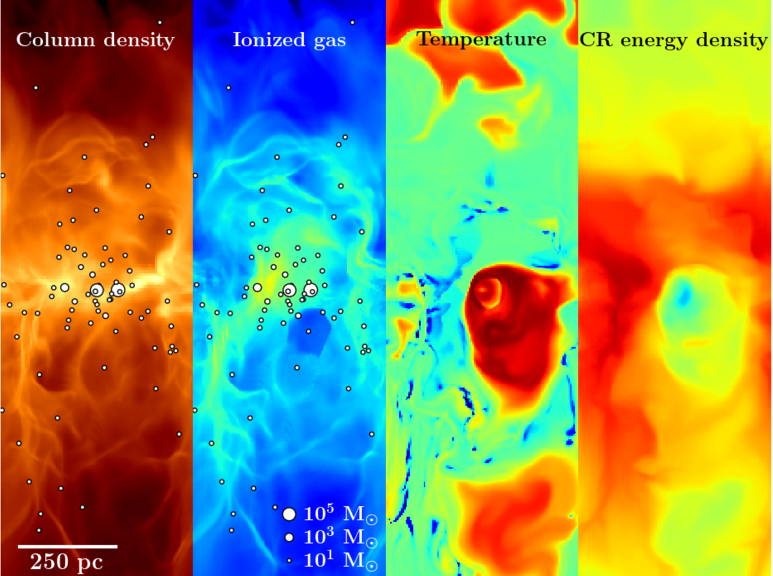Towards a Complete Model of the Interstellar Medium

Fig.1 Schematic edge-on view of a test simulation for the new SuperSILCC project. Here runaway O-stars (small white dots) travel long distances away from their parental star clusters (large white dots) before they explode as supernovae.
For the first time MPA scientists and European collaborators have simulated the solar neighborhood interstellar medium (ISM), including physical processes following all major thermal and non-thermal components - ionized, neutral and molecular gas, dust, interstellar radiation, magnetic fields, and cosmic rays in the presence of star formation. As the different processes strongly influence each other, the simulations highlight the importance of including them all, in particular radiation and cosmic rays, for a realistic model of the star-forming ISM. Within the Gauss Center for Supercomputing (GCS) project SuperSILCC the team will use SuperMUC-NG, one of the world’s fastest supercomputers, to reveal the physical origins of the ISM structure also in extreme environments at high redshift.
See: https://www.mpa-garching.mpg.de/684641/hl201905